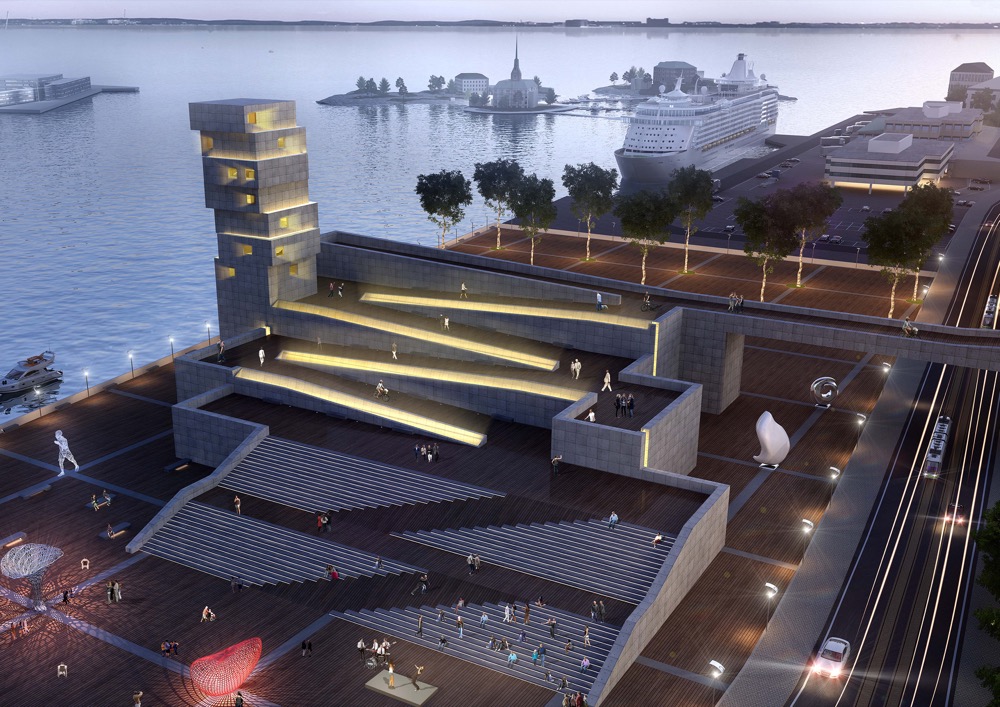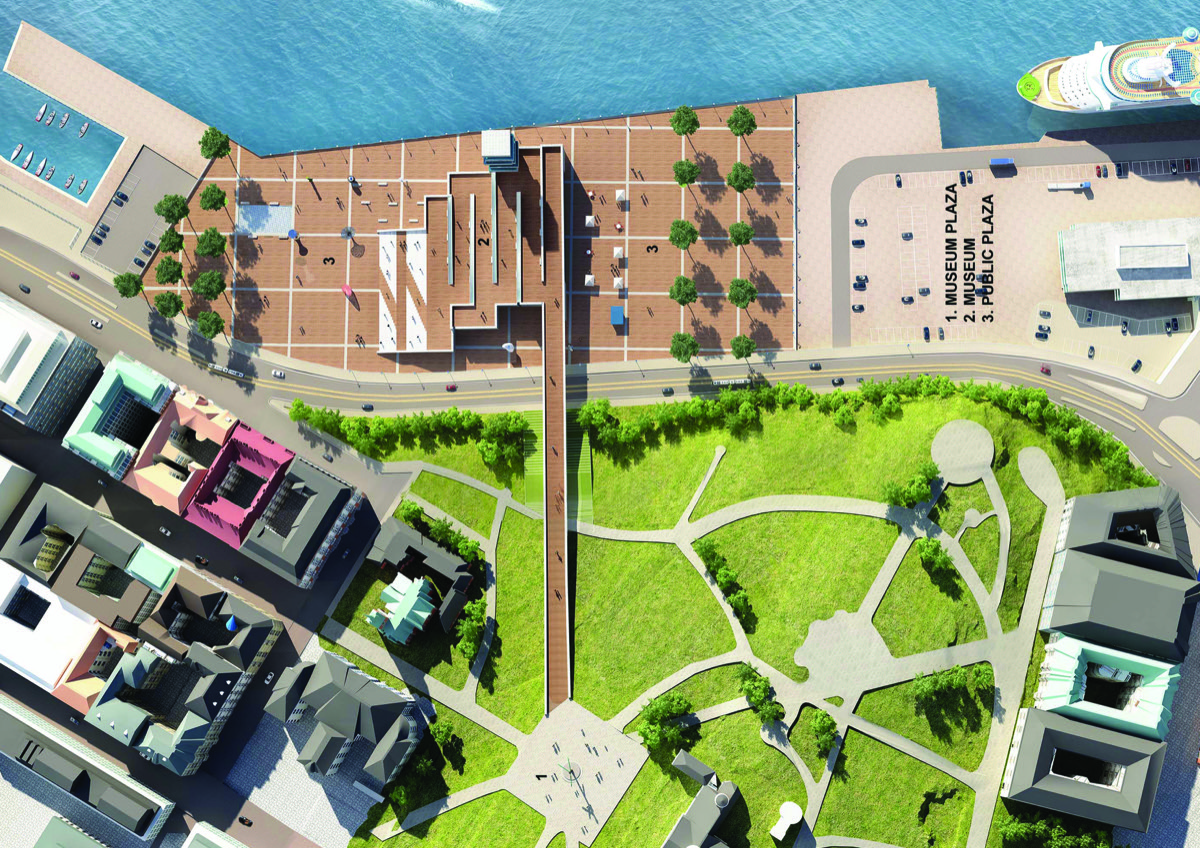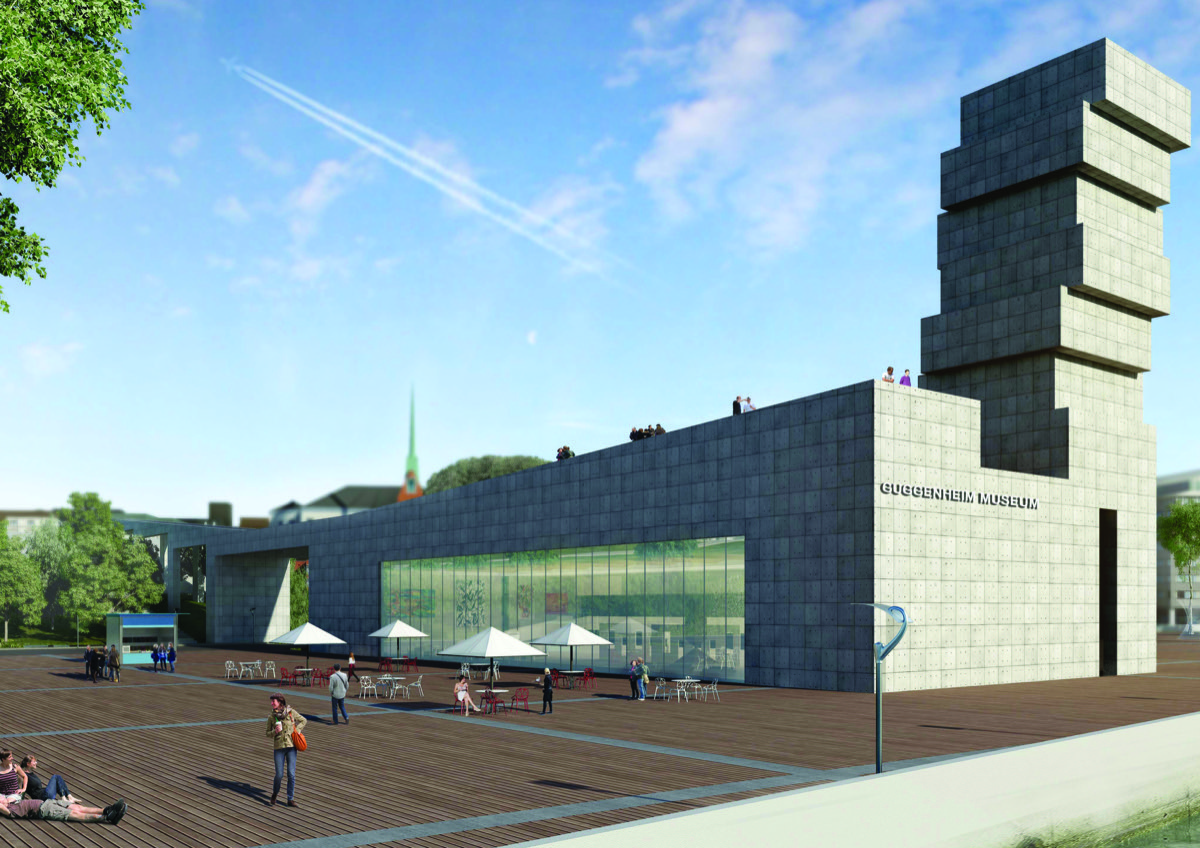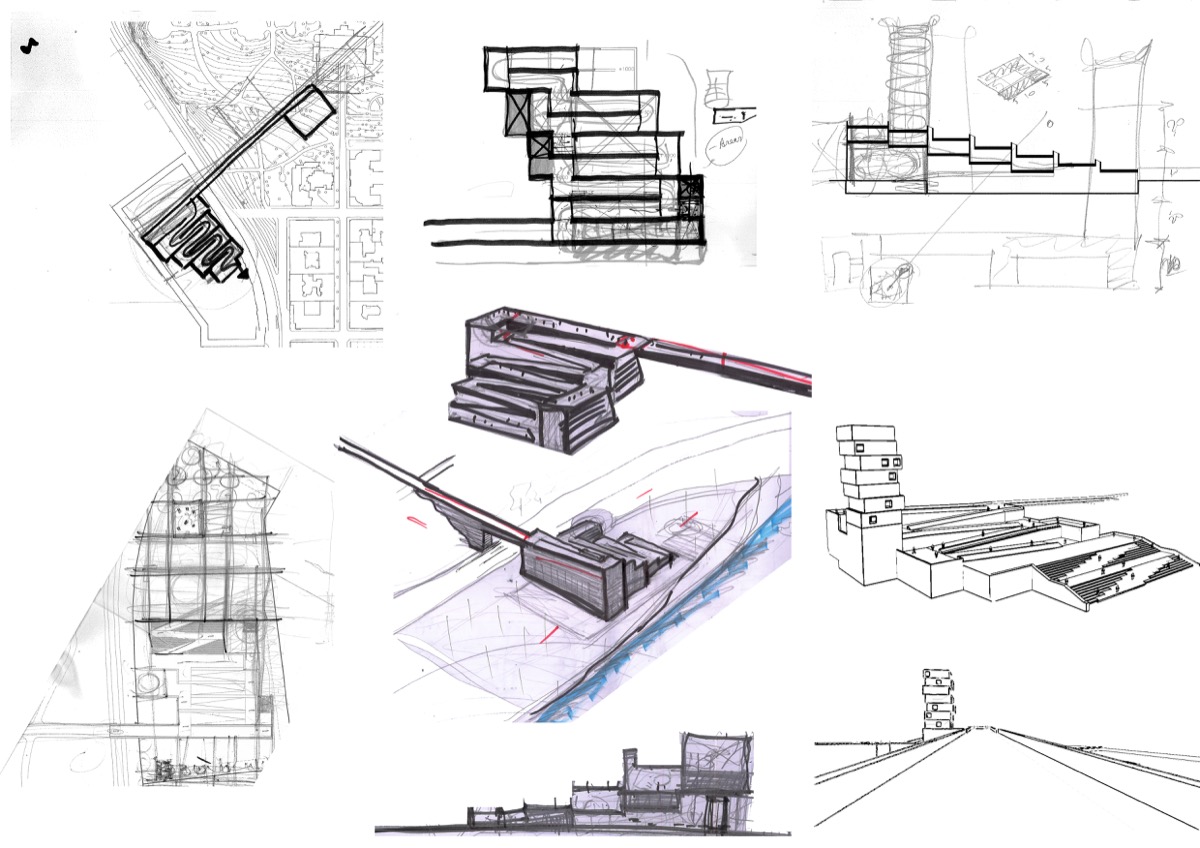 CONCEPT DESCRIPTION
CONCEPT DESCRIPTION
Helsinki is home to a number of prominent museums, and is recognized by its design district. The cityscape comprises a range of architectural styles, from neoclassicism to Art Nouveau and the contemporary Architecture of Alvar Aalto. This is an attempt to respond to this city and respect the man.
The axis and the aaltower.
The site for Guggenheim Museum is an urban space of great national and cultural significance . The aim is to create a public space that both welcomes new visitors and also serves as a key cultural destination for the community. The design responds to this context in a holistic way by creating a MUSEUM LOOP, which connects all the museums of Helsinki into a closed circuit terminating into a plaza. The museum acts as an important link to bind the past and future of art. The idea is to shape the city into a unique maze of museums forming an interface between the water and the greens. The design ventures into the city, creating this large plaza in the Tahtitorninvuorenpuisto; the observatory park. The plaza forms an apex directing the tourists to various museums in the city.
Concept Drawings:
The journey to the Guggenheim Museum begins from this plaza, A defined access leading the audience to the building along the axis, Artaxis. It subtly merges into the builtform terminating at the highest point of the mass, the Aalto tower, Aaltower. The audience here experiences this dynamic transition of space. The ramp unfolds onto the site creating a dialogue between the building and the environment. The design is an approach with contextuality in the concept, physically and metaphysically, the art of museums and Alvar Aalto.

The Aalto tower anchored at the harbour edge of the form pays homage to the great architect. The tower is designed in such a way that it comprises of windows, which open out into the city, each window providing a vista to an Aalto building. The tower regards the masterpieces created by the artist in a very systematic manner. The floors gradually grow into the tower, each floor responds to the Aalto building in the proximity of the site. The method used to achieve this is based on simple logic that the tower is the centre from which concentric circles radiate out to the city. Each circle represents the consecutive floors and defines a range to identify the buildings. First circle identifies six buildings; Savoy Restaurant, Enso Gutzeit Headquarters, Union Bank Finland, Rautatalo Office Building, Academic Book Store, Finnish Engineering Society Building. Thus, the first floor of the tower comprises of six windows, each looking intoafore mentioned buildings. Similarly, the second floor focuses on the buildings identified in the second circle like the Electric Power Company and Administration Building. The third floor looks into the iconic Finlandia Hall. The windows on the fourth floor focus onto The National Pension Institute, The House of Culture. The fifth and sixth floor is devoid of any window, as the corresponding circle range could not identify any Aalto designed building. The seventh (topmost) floor admires the Aalto Studio and Aalto House.
More Visualisations:

The entry to the building is modest, from the tower. The audience walks into a massive (read tall) volume leading to an open reception. The exhibition has two galleries. The first one is a massive volume where priceless art installations occupy the space and the other is guided tour through the ramp tubes. The art pieces could be displayed all along the walls of these tubes. This approach gives a flexible solution.
The site is a plaza for cultural and social events. The ramps of the buildings merge into the site in the form of an amphitheatre. This forms a stage to host festive events and social gatherings. The water body imparts a majestic background to the plaza, enhancing the beauty of the design.
The idea is not to stand out but to facilitate harmony in time and space in Helsinki spirit, understated.
“However functional or minimal the architecture gets, it should be rooted in humanity and how people live”
– Alvar Aalto
Drawings


















